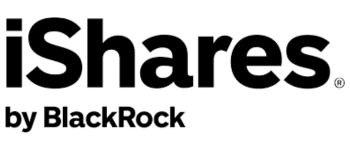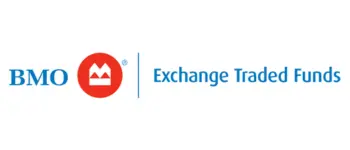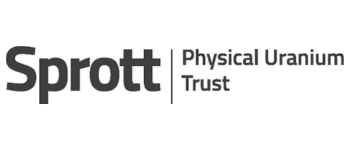Canada’s Go-To Commodity ETFs for Resource Exposure
Key takeaways
Macroeconomic Sensitivity – Commodity ETFs are influenced by inflation, interest rates, and global supply-demand trends.
Broad Exposure to Commodities – These ETFs offer access to energy, metals, and agriculture, key sectors in Canada’s resource-rich economy.
Physical vs. Equity-Based Holdings – Some ETFs hold actual commodities (gold, silver, uranium), while others track companies in these sectors.
One ETF I like way better than the ones on this list.Amidst a world with record government spending, sticky inflation, and overall economic uncertainty, commodities are starting to become popular investing choices among investors. These can include, but are certainly not limited to:
- gold
- silver
- uranium
- oil
- graphite
If you’re looking to get exposure to precious metals or other commodities, commodity ETFs are often the best route to go
Buying individual commodities can be somewhat tricky, especially when we get into the idea of commodity futures. Commodity markets are complex, and should only really be utilized by Canadian investors who knows the ins an outs of futures contracts.
The fact you can gain single-click exposure to pretty much any precious metal or commodity you want on the Toronto Stock Exchange with an exchange-traded fund has made commodity-based Canadian ETFs extremely popular.
In this article, I’m going to list some of the top commodity ETFs in the country, and I’ll try to cover a relatively broad list. If ETFs is your game, don’t miss our piece on Canada’s top preferred share ETFs here.
Lets get right into it.
What are the best Canadian commodity ETFs to buy today?
- The iShares S&P/TSX Capped Energy Index ETF (XEG)
- Global X Crude Oil ETF (HUC)
- iShares S&P/TSX Global Gold Index ETF (XGD)
- iShares Gold Bullion ETF (CGL, or CGL.C)
- BMO Gold Bullion Series Units ETF (TSE: ZGLD)
- Global X Silver Miners ETF (ARCA:SIL)
- Sprott Physical Silver Trust ETF (PSLV)
- iShares Global Agriculture Index ETF (COW)
- Global X Uranium ETF (URA)
- Sprott Physical Uranium Trust (U)
- Aberdeen Standard Physical Precious Metal Basket ETF (GLTR)
The top commodity ETFs when it comes to oil and gas
Canadian energy sector leader
The iShares S&P/TSX Capped Energy Index ETF (XEG)

This ETF tracks the S&P/TSX Capped Energy Index, giving investors exposure to major Canadian oil and gas companies. With a concentrated focus on energy producers, it benefits from rising oil prices and energy demand.
Direct crude oil exposure
Global X Crude Oil ETF (HUC)

Provides direct exposure to crude oil prices by tracking WTI crude oil futures.
Top commodity ETFs when it comes to gold
Gold mining stock exposure
iShares S&P/TSX Global Gold Index ETF (XGD)

Holds major gold mining stocks, primarily Canadian firms like Barrick Gold and Agnico Eagle.
Direct physical gold exposure
iShares Gold Bullion ETF (CGL, or CGL.C)

Holds actual gold bullion, providing a direct hedge against inflation and market instability.
Direct physical gold exposure
BMO Gold Bullion Series Units ETF (TSE: ZGLD)

Holds physical gold bullion, allowing investors to gain exposure to gold without investing in mining stocks or futures.
Top commodity ETFs when it comes to silver
Silver mining stock exposure
Global X Silver Miners ETF (ARCA:SIL)

Tracks leading silver mining stocks, offering leveraged exposure to silver prices.
Direct physical silver exposure
Sprott Physical Silver Trust ETF (PSLV)

Holds actual silver bullion, allowing investors to bypass futures contracts.
Top commodity ETFs when it comes to agriculture
Agricultural commodity stock exposure
iShares Global Agriculture Index ETF (COW)

Invests in companies involved in farming, fertilizers, and agricultural equipment.
The top commodity ETFs when it comes to uranium.
Uranium mining stock exposure
Global X Uranium ETF (URA)

Holds uranium miners benefiting from nuclear energy growth.
Direct physical uranium exposure
Sprott Physical Uranium Trust (U)

Holds actual uranium, providing direct exposure to uranium price movements.
BONUS: An all in one precious metal ETF
Diversified precious metals exposure
Aberdeen Standard Physical Precious Metal Basket ETF (GLTR)

Holds gold, silver, platinum, and palladium for broad commodity exposure.
Overall, the options when it comes to commodity ETFs are endless
I’ve highlighted a bunch of different ETFs that can get you exposure to oil, natural gas, gold, silver, agriculture, uranium, platinum, and palladium. However, there are many more commodities out there, and if I had all of them on this list, it would be never-ending.
So, first decide whether or not you want an equity ETF, which would be companies that produce, explore for, and sell the underlying commodity, or whether or not you want exposure to the commodity directly.
From there, you can at least weed out the majority of commodity ETFs and point your focus to the one that makes the most sense for you.
If you’d like another commodity to be added to this list, simply shoot me an e-mail and I will try to accommodate!
